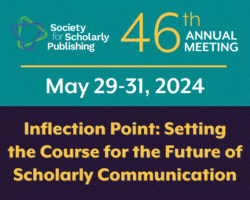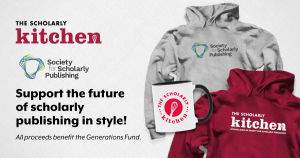The purpose of the SSP Preconference at the annual APE Meeting in Berlin a few months back was to focus on bringing value and practical solutions to problems and opportunities facing scholarly publishing.
The day began with a keynote from Martha Sedgwick, Vice President of Innovation at Sage Publishing. Sedgwick rolled out an impressive collection of new innovations that Sage has implemented to include things as simple as re-organizing staff in more collaborative ways to launch new products.
The theme of the keynote was that scholarly publishers must be willing to innovate to meet the changing needs of customers and this can be done without throwing out the old. She discussed the importance of having the right people from the organization on a team and being willing to fail. Some of the new product offerings capitalized on existing content, allowing for innovation without having to resource new content teams.
Sedgwick’s talk was a great segue into the next panel discussion about “overcoming blind spots” to deliver value to users.
Anne Powell at INASP provided a data-filled presentation about the needs of researchers in the Global South and Africa. She drew attention to researchers and journal editors that manage to conduct research, peer review, and publish findings under extreme resource needs. She offered practical suggestions such as journal editor mentoring and training opportunities as ways to bridge the gaps.
Koen Vermier, a member of the Global Young Academy and the French National Centre for Scientific Research, shared data regarding younger researchers and the services the Global Young Academy are offering to this group. As with the remarks from Powell, mentoring and advocating for a “seat at the table” was an important theme.
Philip Shaw, an Executive managing editor at Sage Publishing, talked about diversity and inclusion efforts at Sage. He shared some details about the workforce at Sage and some new initiatives around leadership training and inclusion practices they have implemented.
The final panelist was Bill Kasdorf of Kasdorf & Associates. Accessibility of scholarly content continues to be an issue with technical DTDs not being sufficient for software that improves accessibility. He took participants through a brief history of accessibility measures and introduced an enhanced schema for tagging scholarly content.
The afternoon included an interactive roundtable session (full disclosure: some tables were rectangular) designed to identify a problem and brainstorm solutions. Some of the topics covered publication processes, ethics, open data initiatives, preprints, Plan S compliance, accessibility, and access control.
The final session of the day covered case studies of new product offerings. Vanessa Fairhurst of Crossref talked about how they used publisher and user feedback to develop a dashboard documenting which Crossref services publishers are using. This new dashboard not only provides a level of transparency for users, but also shows publishers the range of services they may not be taking full advantage of.
Sara Grimme of Digital Science showed how the Dimensions platform continues to develop by pulling in more and more data in an attempt to provide a complete picture of the ecosystem around a journal, an article, or a researcher.
Finally, Jason Colman, Director of Michigan Publishing Services at the University of Michigan Library, talked about the development and launch of Fulcrum, a platform for open access monographs. While open access is a reliable offering in journals, OA books has a steeper climb due to the expense of producing books and the lack of funding. The University of Michigan set out to provide a platform and services that reduces the barriers to OA books and monographs.



Join the Conversation
You must be logged in to post a comment.